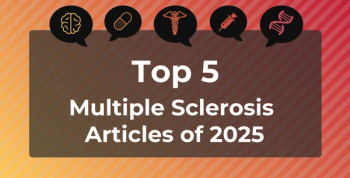
Smokeless Tobacco, E-Cigarettes Associated With Development of AMD
Key Takeaways
- Smokeless tobacco and e-cigarette use are linked to increased AMD risk, a leading cause of blindness in older adults.
- The study used 2017 National Health Interview Survey data, analyzing associations with logistic regression models.
A slight association between age-related macular degeneration (AMD) was also found with e-cigarettes.
Individuals who used smokeless tobacco and e-cigarettes had an increased risk of developing
The leading cause of blindness in those aged 65 years and older is AMD. With the frequency of its occurrence, regulating modifiable risk factors is an important aspect of reducing the risk of its development. An important modifiable risk factor for AMD is cigarette smoking, which has been well-established as a risk factor for both
The NHIS has been conducted in person each year by the CDC since 1957 and has a cross-sectional design. The survey is completed by participants in all 50 states and Washington, D.C., to collect data. The survey receives updates every 15 years to include pertinent questions. This study in particular used the 2017 database to extract data on those who reported use of smokeless tobacco and e-cigarettes. Age, sex, race, number of packs of cigarettes used per day, and body mass index were extracted to be used as covariates. Associations were calculated using unadjusted and adjusted logistic regression models.
There were 26,689 participants who responded to the survey and were included in the analysis. AMD had a weighted prevalence of 1.9% in the participants, with those having AMD being significantly older, disproportionately non-Hispanic White, and more often women.
The unadjusted OR for AMD in those who had been exposed to e-cigarettes was 0.44 (95% CI, 0.32-0.60); after adjusting for covariates, the OR increased to 1.08 (95% CI, 0.73-1.60). Smokeless tobacco products had a slightly stronger association with AMD. Those who were exposed to smokeless tobacco had an unadjusted OR of 0.96 (95% CI, 0.68-1.36) of contracting AMD. This increased to an OR of 1.49 (95% CI, 1.02-2.18) when adjusting for covariates.
There were some limitations to this study. Institutionalized populations and those without a fixed address were not included in NHIS, which could affect the results. The survey is based on self-reporting data, which could be subject to social desirability bias, recall bias, and bias in health care access. The use of e-cigarettes and smokeless tobacco, as well as the prevalence of AMD, could be underestimated due to the self-report nature of the study. The duration of use and the frequency of use were not assessed in this study due to lack of data, which prevented analysis on the prevalence or severity of AMD as associated with these characteristics.
“Based on our findings, we recommend that public health efforts be aimed at raising awareness about the increased risk of developing vision-threatening diseases such as AMD that may be conferred with tobacco use, and that the message include use of not only cigarettes but also tobacco-alternative products as well,” the authors concluded. The authors urged future studies to provide long-term data on the use of e-cigarettes to understand its effect on AMD.
References
1. Ochoa A III, Brinson J, Chin Loy K, Yousuf SJ. Associations between electronic cigarettes, smokeless tobacco, and age-erlated macular degeneration in the 2017 United States National Health Interview Survey. J Vitreoretin Dis. Published online August 10, 2025. doi:10.1177/24741264251362886
2. Vision loss and blindness: overview of smoking and eyesight. CDC. Updated February 24, 2025. Accessed August 13, 2025.
Newsletter
Stay ahead of policy, cost, and value—subscribe to AJMC for expert insights at the intersection of clinical care and health economics.







































